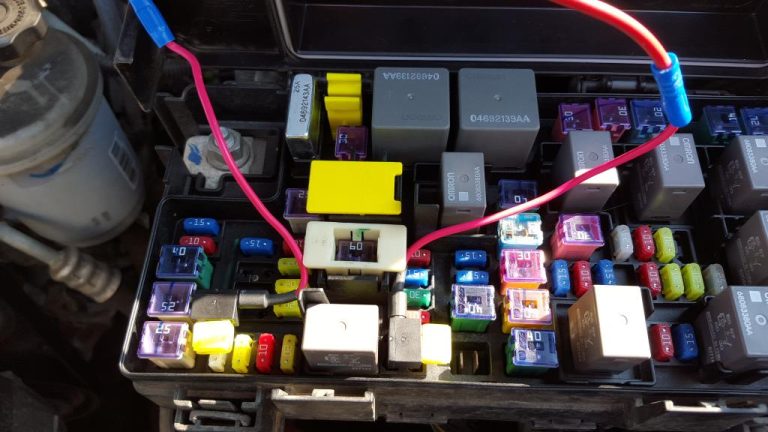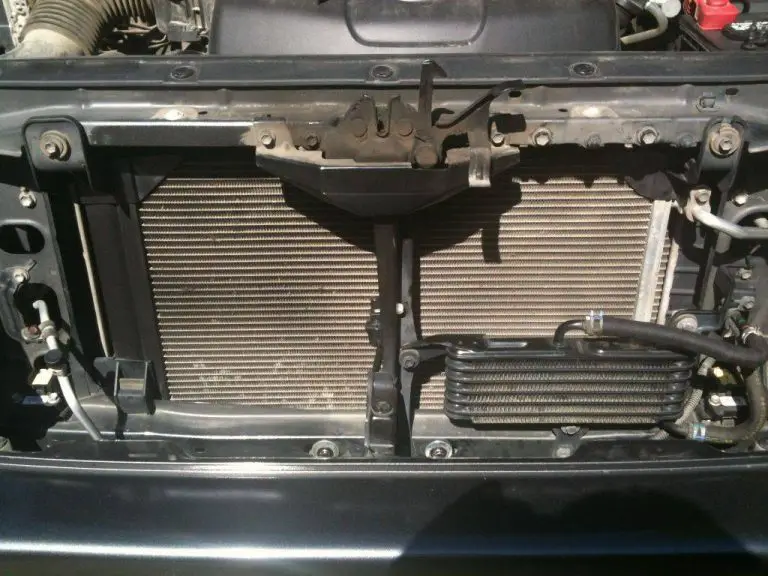6.7 Cummins Sensor Locations
The 6.7 Cummins engine features various sensors that play a crucial role in its performance and efficiency. Some key sensor locations include the Exhaust Gas Temperature (EGT) sensors located in the exhaust system, the Crankshaft Position (CKP) sensor found near the crankshaft,
The Camshaft Position (CMP) sensor is located on the engine block, the Fuel Rail Pressure (FRP) sensor is on the fuel rail, the Manifold Absolute Pressure (MAP) sensor is near the intake manifold, the Intake Air Temperature (IAT) sensor is positioned in the intake air stream, and the
Turbocharger Boost Pressure sensor installed near the turbocharger. Familiarizing yourself with these sensor locations can significantly aid in maintenance and troubleshooting efforts.
Sensors are critical components of the 6.7 Cummins engine, as they monitor and manage the engine’s performance, efficiency, and emissions. These sensors collect data on various parameters,
Such as temperature, pressure, and position, allowing the Engine Control Module (ECM) to make real-time adjustments to the engine’s operations.
Related Article: Power Stroke Cam Sensor Location
This ensures optimal performance, fuel efficiency, and compliance with emission standards. Properly functioning sensors also help prevent engine damage and prolong the engine’s lifespan.
Ram 2500 6.7L Cummins Sensor Locations
6.7 Cummins Sensor Locations
The 6.7 Cummins is a popular diesel engine found in Dodge Ram trucks. This engine has various sensors that help monitor and manage its performance. Here are the locations of some key sensors:
Exhaust Gas Temperature (EGT) Sensors:
These are located before and after the Diesel Particulate Filter (DPF) in the exhaust system. They monitor the temperature of exhaust gases and help control the DPF regeneration process.
Crankshaft Position Sensor:
This sensor is located at the rear of the engine block, close to the transmission. It helps monitor the position of the crankshaft, providing information to the Engine Control Module (ECM) for fuel injection and ignition timing.
Camshaft Position Sensor:
Located at the front of the engine, near the gear housing cover, this sensor provides information on the position of the camshaft for proper fuel injection and ignition timing.
Fuel Rail Pressure Sensor:
This sensor is found on the fuel rail and measures the pressure of fuel being delivered to the injectors. The ECM uses this information to adjust fuel injection for optimal performance.
Intake Air Temperature (IAT) Sensor:
This sensor is typically located in the intake manifold or the air intake tube. It measures the temperature of the incoming air, which is important for fuel management and turbocharger operation.
Mass Air Flow (MAF) Sensor:
Located in the air intake system, this sensor measures the amount of air entering the engine. The ECM uses this data to calculate the appropriate air-fuel ratio for efficient combustion.
Turbocharger Boost Pressure Sensor:
This sensor is found near the turbocharger or on the intake manifold. It measures the boost pressure in the intake system, allowing the ECM to control the turbocharger’s operation.
Engine Coolant Temperature (ECT) Sensor:
Usually located near the thermostat housing, this sensor monitors the engine coolant temperature to ensure proper operation of the cooling system and optimize engine performance.
These are just a few of the many sensors found in the 6.7 Cummins engine. Knowing their locations can help you diagnose and troubleshoot issues with your engine’s performance.
Specific Locations and Access Points
Now that you know what each sensor does, let’s talk about where they are located in the engine and how to access them:
- Camshaft Position Sensor: Located on the front of the engine, near the camshaft gear. Accessible by removing the engine cover and air intake duct.
- Crankshaft Position Sensor: Located on the bottom of the engine block, behind the crankshaft pulley. Accessible by removing the wheel well liner and the pulley.
- Coolant Temperature Sensor: Located on the engine block, near the thermostat housing. Accessible by removing the engine cover and air intake duct.
- EGR Temperature Sensor: Located on the EGR valve. Accessible by removing the air intake duct and the EGR valve.
- Exhaust Gas Pressure Sensor: Located on the exhaust pipe, after the turbocharger. Accessible by removing the heat shield and the sensor connector.
- Fuel Rail Pressure Sensor: Located on the fuel rail. Accessible by removing the engine cover and fuel rail mounting bolts.
- Intake Air Temperature Sensor: Located on the air intake duct. Accessible by removing the air intake duct and the sensor connector.
- MAP Sensor: Located on the intake manifold. Accessible by removing the engine cover and the sensor connector.
- NOx Sensor: Located on the exhaust pipe, before the diesel particulate filter (DPF). Accessible by removing the heat shield and the sensor connector.
- Oil Pressure Sensor: Located on the engine block, near the oil filter. Accessible by removing the engine cover and the sensor connector.
- Oil Temperature Sensor: Located on the oil filter housing. Accessible by removing the engine cover and the sensor connector.
- Throttle Position Sensor: Located on the throttle body. Accessible by removing the engine cover and the sensor connector.
Importance of Regular Maintenance and Inspection
Regular maintenance and inspection of these sensors are crucial to the proper functioning of your engine. Malfunctioning sensors can lead to poor performance, reduced fuel economy, and even engine damage.
It’s recommended to check the sensors periodically and replace any that show signs of wear or damage. Additionally, following the manufacturer’s recommended maintenance schedule can help ensure that the sensors and other engine components are in good working order.
So there you have it, a detailed list of sensors in a 6.7 Cummins engine, their locations, and how to access them. Remember to take care of your engine by regularly inspecting and maintaining these sensors. Thanks for reading!
See Also:
Common Sensor Issues and Troubleshooting
Exhaust Gas Temperature (EGT) Sensors
Purpose and Function
Hey, so let me tell you about Exhaust Gas Temperature (EGT) sensors and why they’re important for your 6.7 Cummins engine. EGT sensors are designed to measure the temperature of exhaust gases as they exit the engine.
This information is crucial for the Engine Control Module (ECM) to regulate fuel injection, air-fuel mixture, and turbocharger control, ensuring optimal engine performance and preventing potential damage from excessive temperatures.
By monitoring exhaust gas temperatures, the ECM can also make sure that the engine operates within emission regulations.
Sensor Locations
Now, when it comes to the locations of EGT sensors in a 6.7 Cummins engine, there are a few of them. Generally, you’ll find these sensors installed at different points along the exhaust system. Here’s a brief rundown of their locations:
- Pre-turbo EGT sensor: This one is located right before the turbocharger inlet. It helps the ECM monitor the temperature of exhaust gases entering the turbocharger, preventing it from overheating and ensuring proper turbocharger function.
- DPF inlet EGT sensor: This sensor is situated at the inlet of the Diesel Particulate Filter. It measures the temperature of exhaust gases entering the DPF, which is crucial for optimal DPF regeneration and preventing potential damage from excessive heat.
- DPF outlet EGT sensor: Finally, there’s the sensor at the outlet of the Diesel Particulate Filter. It monitors the temperature of exhaust gases exiting the DPF, providing essential feedback to the ECM for proper DPF operation and ensuring that emission standards are met.
So, there you have it! Understanding the purpose and locations of EGT sensors in your 6.7 Cummins engine can help you diagnose potential issues and maintain optimal engine performance. Keep an eye on these sensors, and your engine will thank you!
Crankshaft Position (CKP) Sensor
Purpose and Function
Alright, let’s talk about the Crankshaft Position (CKP) sensor and its role in the 6.7 Cummins engine. The CKP sensor is responsible for detecting the position, speed, and rotational direction of the crankshaft.
This information is absolutely vital for the Engine Control Module (ECM) to manage the engine’s ignition and fuel injection timing.
By knowing the precise position of the crankshaft, the ECM can optimize the combustion process, ensuring smooth engine operation, better fuel efficiency, and reduced emissions.
In addition, the CKP sensor helps the ECM detect any misfires or engine problems, making it a key player in maintaining your engine’s health.
Sensor Location
Now, as for the location of the CKP sensor, you’ll typically find it mounted near the crankshaft at the rear or side of the engine block. It’s usually positioned close to a reluctor wheel (a toothed wheel) that’s attached to the crankshaft itself.
As the reluctor wheel rotates with the crankshaft, the CKP sensor reads the changing magnetic field and sends this information to the ECM.
It’s essential to be familiar with the CKP sensor’s location, as issues with this sensor can lead to poor engine performance or even a non-starting engine. By knowing where to find it, you’ll be better equipped to diagnose and resolve any problems related to the crankshaft position sensor.
Fuel Rail Pressure (FRP) Sensor
Purpose and Function
Let’s dive into the Fuel Rail Pressure (FRP) sensor and its significance in the 6.7 Cummins engine. The FRP sensor is designed to monitor the pressure of the fuel present in the common rail system.
This information is crucial for the Engine Control Module (ECM) to regulate the fuel injection process, ensuring that the engine receives the correct amount of fuel at the right time.
By accurately measuring fuel rail pressure, the FRP sensor enables the ECM to optimize the engine’s fuel efficiency, power output, and emissions. Moreover, the sensor’s readings help the ECM detect any potential issues in the fuel system, such as leaks or blockages, which can lead to poor engine performance or even engine damage.
Sensor Location
Now, let’s talk about where you’ll find the FRP sensor on a 6.7 Cummins engine. The sensor is typically located on the high-pressure fuel rail, which is connected to the fuel injectors. You’ll often find it close to the front or middle of the engine, depending on the specific model of your 6.7 Cummins engine.
Being familiar with the FRP sensor’s location is essential for diagnosing and resolving fuel system issues. By knowing where to look, you can quickly check the sensor’s condition and troubleshoot any problems related to fuel rail pressure, ensuring that your engine continues to run smoothly and efficiently.
Manifold Absolute Pressure (MAP) Sensor
Purpose and Function
Let’s discuss the Manifold Absolute Pressure (MAP) sensor and its importance in the 6.7 Cummins engine. The MAP sensor is responsible for measuring the pressure inside the intake manifold.
This information is essential for the Engine Control Module (ECM) to calculate the engine’s air-fuel mixture, ignition timing, and turbocharger boost pressure.
By monitoring the intake manifold pressure, the MAP sensor enables the ECM to optimize engine performance, fuel efficiency, and emissions.
Additionally, the sensor’s data helps the ECM identify any potential issues related to air intake or turbocharger performance, which can negatively impact your engine’s overall performance.
Sensor Location
Now, let’s talk about where to find the MAP sensor on a 6.7 Cummins engine. The sensor is typically located on or near the intake manifold, which is where the engine’s air supply is mixed with fuel before entering the combustion chamber.
You’ll often find it mounted to the top or side of the intake manifold, depending on your engine’s specific configuration.
Knowing the MAP sensor’s location is essential for diagnosing and addressing air intake or turbocharger issues. By being familiar with its position, you can quickly check the sensor’s condition and troubleshoot any problems related to manifold absolute pressure, ensuring that your engine operates at peak performance and efficiency.
Turbocharger Boost Pressure Sensor
Purpose and Function
Let’s talk about the Turbocharger Boost Pressure sensor and its role in the 6.7 Cummins engine. The Boost Pressure sensor is responsible for measuring the pressure generated by the turbocharger, which helps to increase the engine’s power output by forcing more air into the combustion chamber.
This information is crucial for the Engine Control Module (ECM) to regulate the turbocharger’s operation and optimize the engine’s air-fuel mixture, ignition timing, and fuel injection.
By monitoring the turbocharger’s boost pressure, the sensor enables the ECM to optimize engine performance, fuel efficiency, and emissions.
Additionally, the sensor’s data helps the ECM identify any potential issues related to the turbocharger, which can lead to poor engine performance, increased emissions, or even engine damage.
Sensor Location
Now, let’s discuss the location of the Turbocharger Boost Pressure sensor in a 6.7 Cummins engine. The sensor is typically mounted near the turbocharger, either on the compressor housing or on the intake piping between the turbocharger and the engine. Its placement can vary depending on your engine’s specific configuration.
Being familiar with the Boost Pressure sensor’s location is essential for diagnosing and addressing turbocharger-related issues. By knowing where to find it, you can quickly check the sensor’s condition and troubleshoot any problems related to turbocharger boost pressure, ensuring that your engine continues to deliver optimal performance and efficiency.
Camshaft Position (CMP) Sensor
Purpose and Function
Let’s discuss the Camshaft Position (CMP) sensor and its importance in the 6.7 Cummins engine. The CMP sensor is responsible for detecting the position and rotational speed of the camshaft,
Which controls the opening and closing of the engine’s intake and exhaust valves. This information is crucial for the Engine Control Module (ECM) to manage the fuel injection and ignition timing accurately.
By monitoring the camshaft position, the CMP sensor allows the ECM to optimize engine performance, fuel efficiency, and emissions. Furthermore, the sensor’s data helps the ECM identify any potential issues related to valve timing, which can lead to poor engine performance or even engine damage.
Sensor Location
Now, let’s talk about where to find the CMP sensor on a 6.7 Cummins engine. The sensor is typically located on the engine block or cylinder head, near the camshaft.
Its position can vary depending on your engine’s specific configuration, but it is generally situated close to the camshaft gear or a tone wheel, which rotates with the camshaft.
As the camshaft rotates, the CMP sensor reads the changing magnetic field and sends this information to the ECM.
Knowing the CMP sensor’s location is essential for diagnosing and addressing valve timing-related issues.
By being familiar with its position, you can quickly check the sensor’s condition and troubleshoot any problems related to the camshaft position, ensuring that your engine operates at peak performance and efficiency.
Intake Air Temperature (IAT) Sensor
Purpose and Function
Let’s discuss the Intake Air Temperature (IAT) sensor and its role in the 6.7 Cummins engine. The IAT sensor measures the temperature of the air entering the engine through the intake system. This information is crucial for the Engine Control Module (ECM) to calculate the optimal air-fuel mixture, ignition timing, and fuel injection.
By monitoring the intake air temperature, the IAT sensor allows the ECM to adjust the engine’s operations to compensate for changes in air density due to temperature fluctuations. This helps maintain optimal engine performance, fuel efficiency, and emissions.
Additionally, the sensor’s data can assist the ECM in identifying potential issues related to the air intake system, which can negatively impact your engine’s overall performance.
Sensor Location
Now, let’s talk about where to find the IAT sensor on a 6.7 Cummins engine. The sensor is typically located within the intake air stream, either in the air intake duct or mounted directly on the intake manifold.
Its placement can vary depending on your engine’s specific configuration, but it is generally positioned close to the Mass Air Flow (MAF) sensor if your engine is equipped with one.
Being familiar with the IAT sensor’s location is essential for diagnosing and addressing air intake-related issues. By knowing where to find it, you can quickly check the sensor’s condition and troubleshoot any problems related to intake air temperature, ensuring that your engine continues to perform at its best and maintain optimal efficiency.

Credit: www.youtube.com
Frequently Asked Questions
What is the most common issue with sensors in a 6.7 Cummins engine?
The most common issue with sensors in a 6.7 Cummins engine is failure due to wiring or connection problems. This can lead to inaccurate readings or complete failure of the sensor. Regular inspection and maintenance can help prevent these issues.
Can I replace a faulty sensor myself, or do I need to take it to a professional?
Replacing a faulty sensor in a 6.7 Cummins engine can be done by a DIY enthusiast, but it requires some knowledge and skill. It’s important to follow the manufacturer’s instructions carefully and use the right tools to avoid damaging the sensor or the engine. If in doubt, it’s best to take it to a professional mechanic.
How can I tell if a sensor is faulty?
There are several signs of a faulty sensor, including warning lights on the dashboard, reduced engine performance, and unusual engine noises. If you suspect a faulty sensor, you can use an OBD-II scanner to check for error codes related to the sensor.
What happens if I ignore a faulty sensor?
Ignoring a faulty sensor can lead to poor engine performance, reduced fuel efficiency, and increased emissions. In some cases, it can also cause severe engine damage or even a non-starting engine. It’s best to address any issues with sensors as soon as possible to avoid costly repairs down the line.
Can I clean a sensor to improve its performance?
Cleaning a sensor can sometimes improve its performance, especially if it’s dirty or covered in debris. However, it’s important to use the right cleaning solution and avoid damaging the sensor or its wiring. If in doubt, it’s best to consult a professional mechanic.
Ram Cummins 6.7 Turbo Speed Sensor Replacement And Some
Conclusion
Importance of Understanding Sensor Locations
In conclusion, understanding the various sensor locations in a 6.7 Cummins engine is crucial for maintaining optimal engine performance and longevity. Each sensor plays a vital role in regulating various engine functions, and being familiar with their locations can help you diagnose potential issues quickly and accurately.
By understanding the function and location of each sensor, you can take a proactive approach to maintenance and troubleshooting, ensuring that your engine operates at peak performance and efficiency. Proper sensor maintenance and replacement can help prevent costly repairs and extend the lifespan of your engine.
Proper Maintenance and Troubleshooting Tips
To maintain your 6.7 Cummins engine’s sensors properly, it’s essential to keep them clean and free from debris or damage. Regular inspections and cleaning can help prevent issues before they become severe. If you suspect a faulty sensor, it’s best to use an OBD-II scanner to diagnose the issue accurately.
When replacing a faulty sensor, always follow the manufacturer’s instructions carefully and use the right tools to avoid damaging the sensor or the engine. Additionally, proper installation and calibration are crucial to ensure accurate readings and optimal engine performance.
In summary, understanding 6.7 Cummins sensor locations and proper maintenance practices can help you keep your engine running smoothly and efficiently for years to come.
See More:
- 6.7 Cummins High Output Vs Regular
- Cummins Ho Vs Standard
- Cummins High Output Vs Standard






